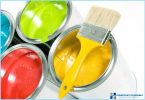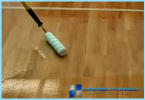The contents
- How to remove old paint from radiators
- The dyeing process
- The choice of paint
- Staining aluminum radiators
- Types of paints
Paint for painting radiators have to withstand high temperatures, ie be heat-resistant. Well, if it meets the requirements of sustainability, i.e., does not emit when heated, harmful and odorous substances.
The role of paint:
- Giving a beautiful view
- Corrosion protection
- Protection from aggressive external environment
How to remove old paint from radiators ↑
Before applying new paint, you must prepare the surface. For starters, a vacuum cleaner removes large dust and small can be wiped with a damp cloth. Grease spots are easily solvents and detergents for washing dishes.
If the old finish is well preserved, not peeled, not inflated, it is not appear spot of rust for simplicity and to save time you can just walk on it with sandpaper so that the new coat of paint is well bonded with the old.
If the old paint is a completely unpresentable form, then it will have to get rid of.
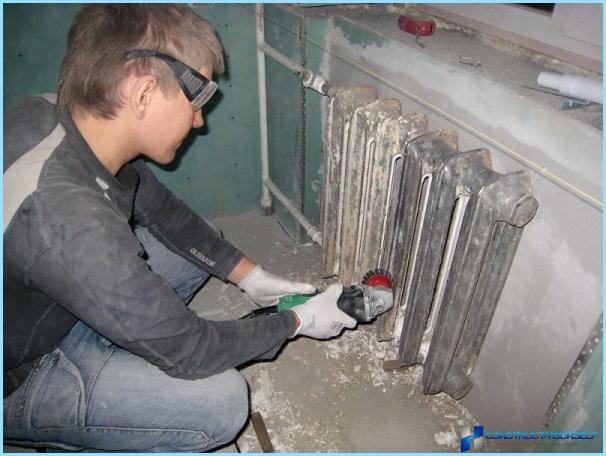
Remove the covering from the battery, use the following:
- Drill with a nozzle in the form of a stiff brush – ruff
- Solvents –a swabs
- Sandpaper.
Mechanical means of removing the old coating guarantee a large amount of dust, and careless use can cause damage to the battery itself.
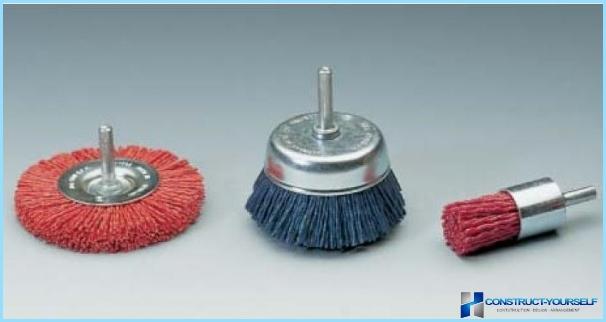
Tips for removing paint
Chemicals are more safe, but working with them should be in a ventilated area and using protective equipment – gloves, mask, goggles etc. are Also not allowed to smoke or make a fire because the flammable solvents.
As a rule, solvents are produced in the form of a thick liquid or gel. They are applied straight and not too thin layer evenly across the surface of the battery. For application use metal or wooden spatula or a brush with natural bristles. Spatulas made of rubber or plastic material from aggressive chemical exposure simply dissolve.
The gel is aged on the surface specified in the instruction time, and then removed with the same spatula together with pieces of the softened paint. Solvent residue washed with water.
Rust can be removed by mechanical sanding or corrosion inhibitors. Major gouges or chips should be sealed with putty.
After that, the dust and dirt from old paint should be removed, allow the battery to dry out. Next, a cover suitable for this type of radiator metal and the paint primer. It contains small maskoobraznoe particles, whose role is to improve adhesion (adhesion) of the surface with paint.
There are also paint already containing the same primer substances, well protect the battery metal from corrosion and lends well to the surface.
The dyeing process ↑
To paint a better battery outside the heating season, then the paint will dry evenly, will not have stains, cracks, blisters, etc. If this is not possible, then you should apply as a thin layer. Ideally, if the battery is not yet installed, or have the option to take it off to paint everywhere.
To preserve the purity of the floor under the battery should be unnecessary to lay a cloth or newspaper. If the dye is applied from a container, will also have to cover the adjacent wall surface.
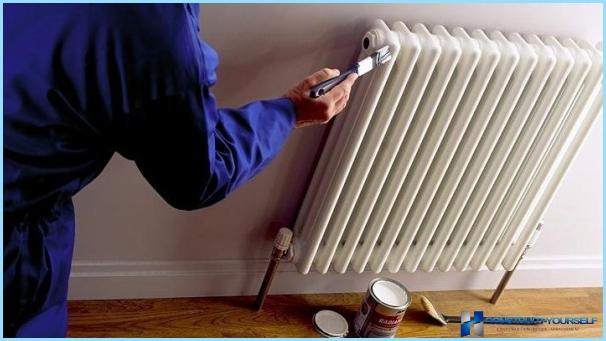
Color of battery brush
For work it is better to choose a brush with soft bristles, they will scatter less spatter. To reach the most inaccessible places will help regular old toothbrush. Not to get dirty on the already painted surface it is better to first paint over the inner side of the radiator. The paint should be applied in the direction from the top of the radiator down.
Do not try immediately to evenly paint the battery in a single layer, it is still unlikely to succeed. Better two neat thin layer because a thick one will be much longer to dry, may leak. The time during which the dye layer is completely dry, usually indicated on the package. Apply a second coat before the time are not worth it, coating will turn out uneven, sloppy.
Painting can be performed not only manually, but also using the spray gun or spray.
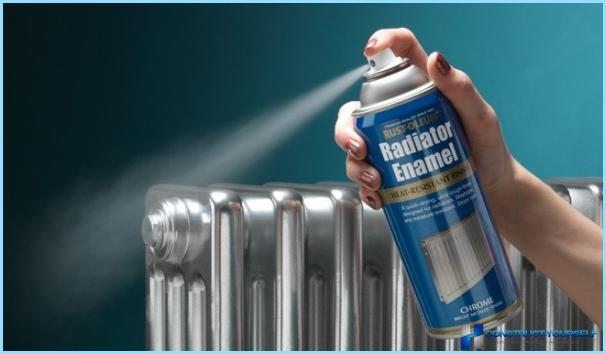
Paint the battery in the can
The choice of paint ↑
Although a radiator and use a regular paint intended for walls, floor and ceiling, but it’s not the best solution. They are not designed for thermal effects, and therefore much faster crack and acquire a yellowish tide.
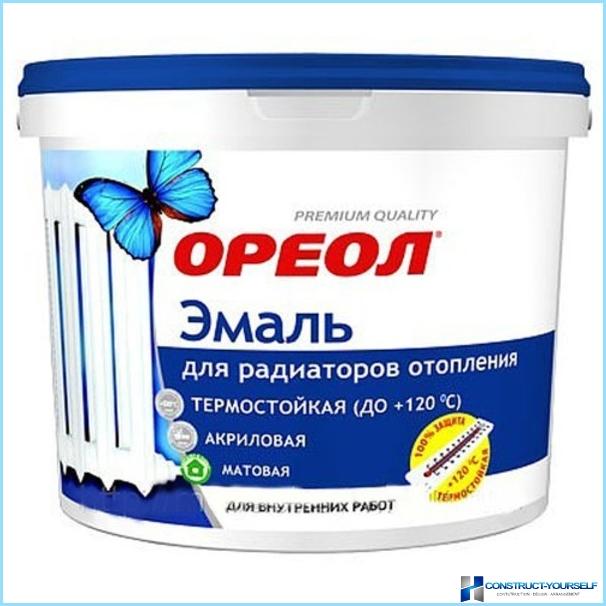
Heat resistant paint for radiators
Choosing between matte and glossy paints, you should note that shiny coat will strongly attract the eye and accentuate all the flaws and surface irregularities. Light matte coating over time becomes gray, because the porous structure of the paint and accumulated dirt.
Although the usual color of the battery is still white, it’s more of a tribute to the Soviet past, when the color selection was poor. In fact, the white radiators will normally look only at the interior in bright colours. For bright or dark rooms should choose another color to paint.
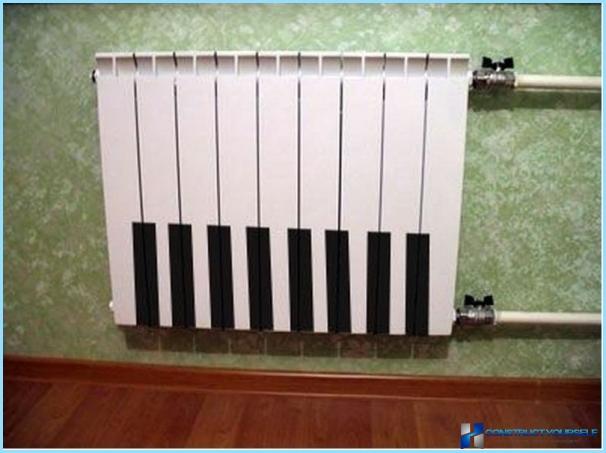
Staining aluminum radiators ↑
Aluminum batteries themselves are neat-looking and smooth coating and additional color not need. If the convection fins are placed very frequently, their color will greatly reduce the heat transfer unit.
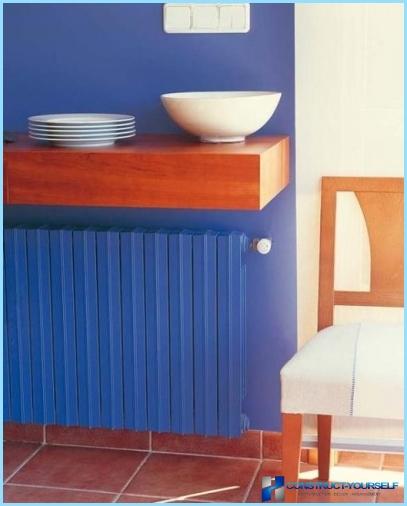
If their appearance hurt the eyes, it is better to close them with a screen or make furniture. If these options for some reason do not fit, the radiator, of course, can be painted. But suitable for cast-iron battery of paint on the aluminum surface does not lie. These radiators should be painted only from the spray. And this should be done during the heating season, because the cold battery at room temperature, the paint will dry a very long time.
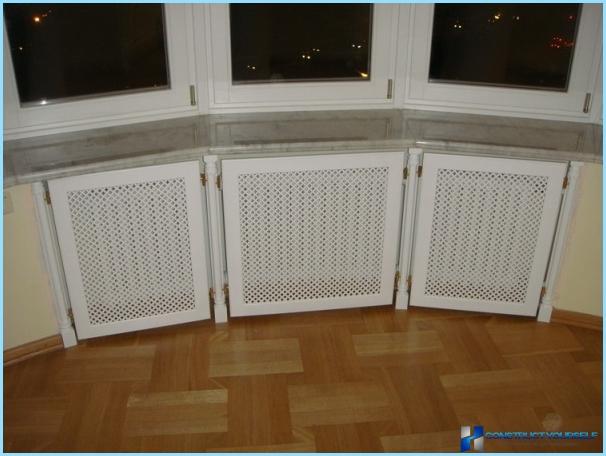
Types of paints ↑
Alkyd ↑
Alkyd paint for radiators is organic, a silicon-organic or water-based. In the first few hours after application it has a strong smell, which then completely disappears. With the beginning of the heating season and the heating devices may smell for a short while back.
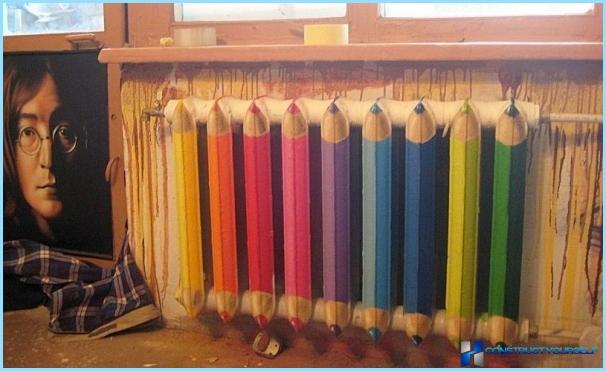
If you select the white paint, it is best to purchase one of the titanium pigment. The options with content of chalk though, and will cost significantly less, but in the process of operation will quickly turn yellow.
Acrylic ↑
Acrylic paints for radiators in appearance and feel much like plastic. This coating is well kept and easy to clean. If the acrylic dye is water based, it is completely devoid of the unpleasant smell.
Hammer ↑
Hammer enamel allow to obtain shades of the same color and various textures. Uneven coating will perfectly conceal irregularities and other surface defects.
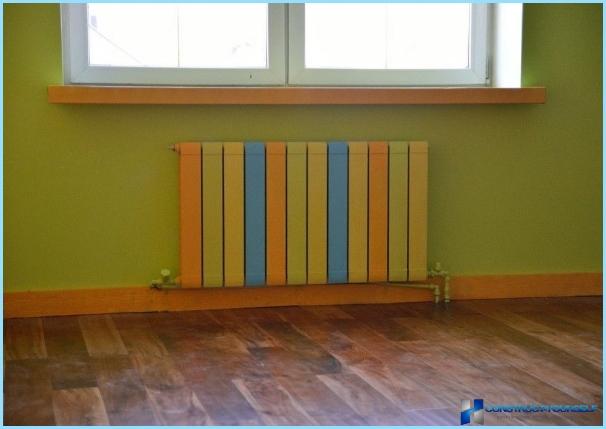
Preparation for application and the color does not differ from the usual. The only thing you need – sanded the radiator to create a rough surface.
Latex ↑
Many wonder whether it is possible to paint the battery with latex paint. Definitely possible, since it combines resistance to high temperatures, quick drying and no unpleasant smell. However, it is significantly inferior in durability to other types of.
Powder ↑
Gaining popularity of so-called powder coating. The dry mixture is applied from a special gun by a small electric potential difference at the radiator and the powder. After applying this paint you need to polimerizuet. Indoors this can be done using a heat gun, but if the radiator removed from the wall, you can put it in the oven. There are also options of powder dye, curing under UV light. However, regular sunlight is not enough for this, you need to use a UV lamp.
Silicate ↑
Paint for battery, based on silicate resin and aluminium designed to work even with very high temperatures, which in practice in the heating system and does not happen. After hardening the material forms a dense, solid but plastic layer due to thermal extensions and contractions of the metal and no cracks arise. This paint does not require pre-priming and has very high levels of grip. Among the disadvantages of this option only the high price and long weathered a strong smell.
Serebryanka ↑
Long been used for painting radiators and silverfish – a mixture of varnish and aluminum powder. This paint perfectly resists high temperature. It should be applied or layer of the old coating or to the basis in the form of a primer. Since among the components of the varnish in Serebryanka are petroleum products, it has a rather strong strong scent, i.e. the room will have to carefully ventilate.
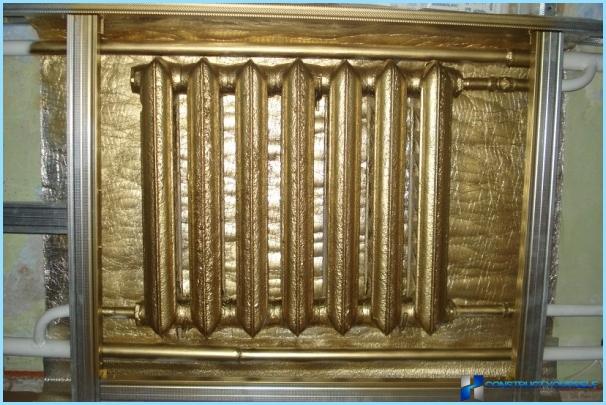
Conclusion ↑
What kind of paint to paint radiators to decide in the end to the buyer. It is only necessary to weigh carefully all the advantages and disadvantages of each possible option. For the room in which you currently live people, the best fit quick-drying paint for radiators without the smell.
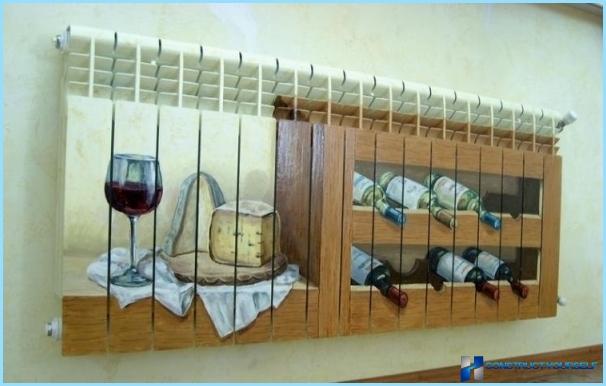
The dwelling will be suitable and long-drying, but with a longer period of further service paint. The material is not worth saving, better to give preference to proven and well-known brands. To see how, in reality indicators of a paint correspond to the declared, and decide what kind of paint for better battery will help the user reviews, which can be easily found on the Internet.


